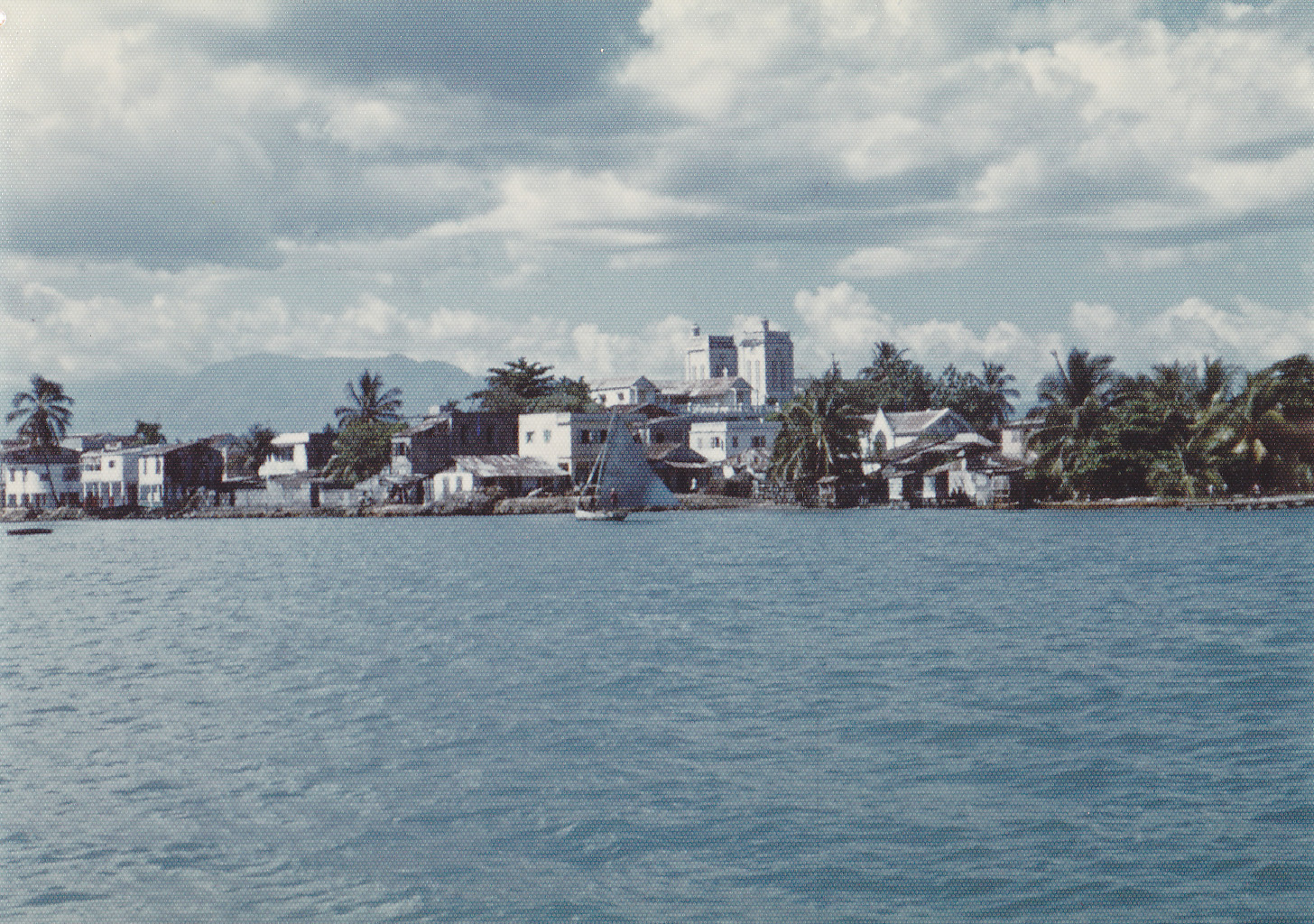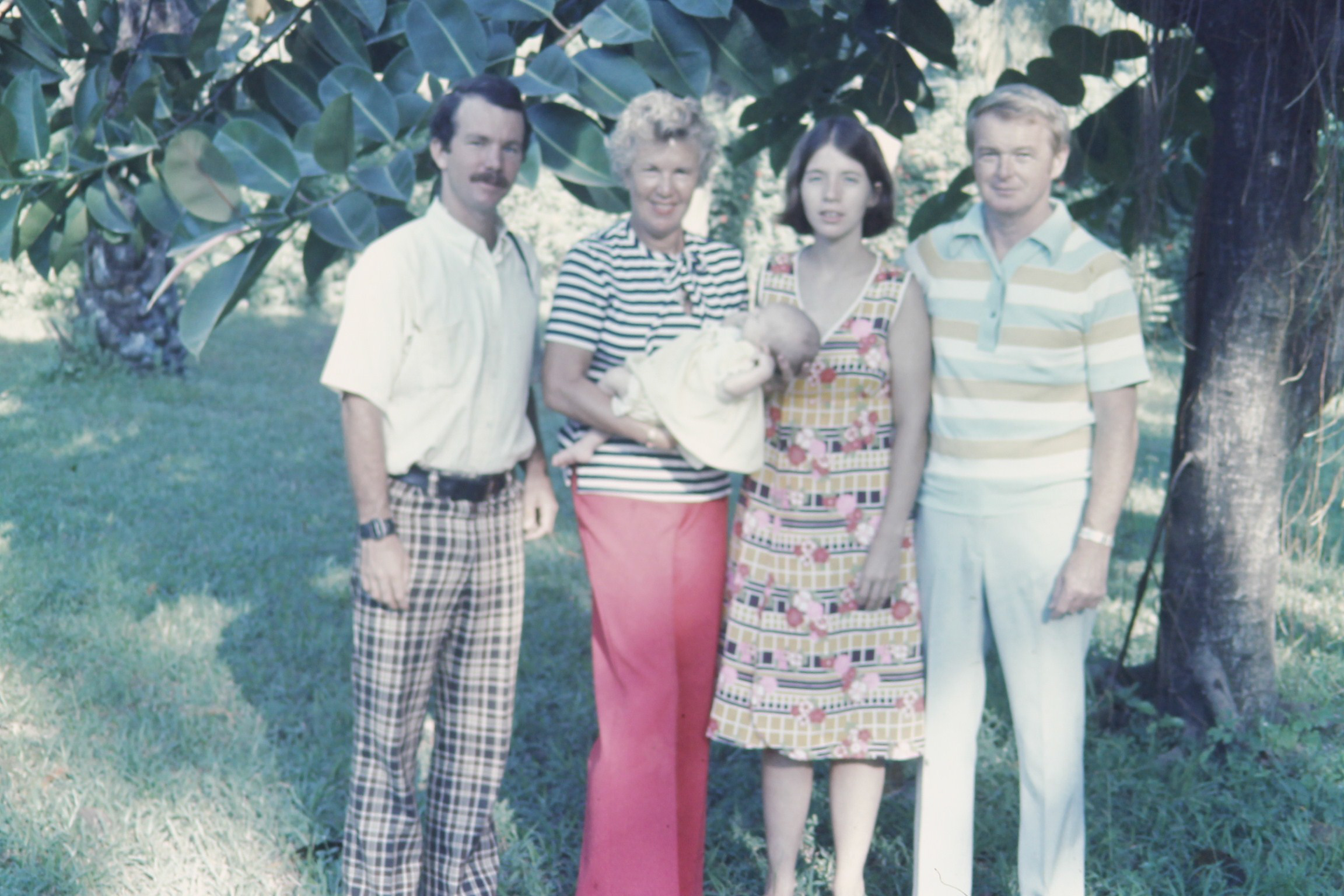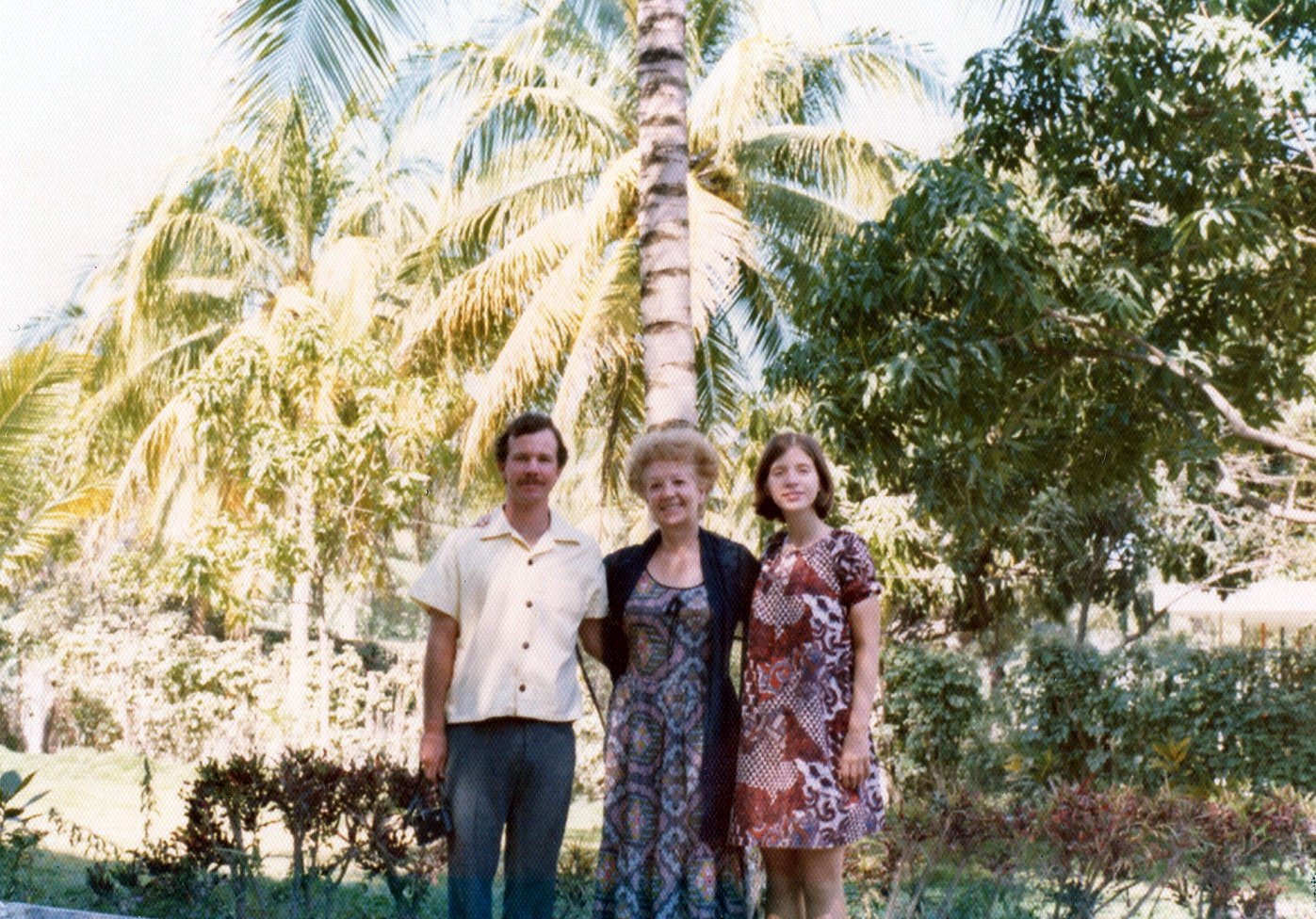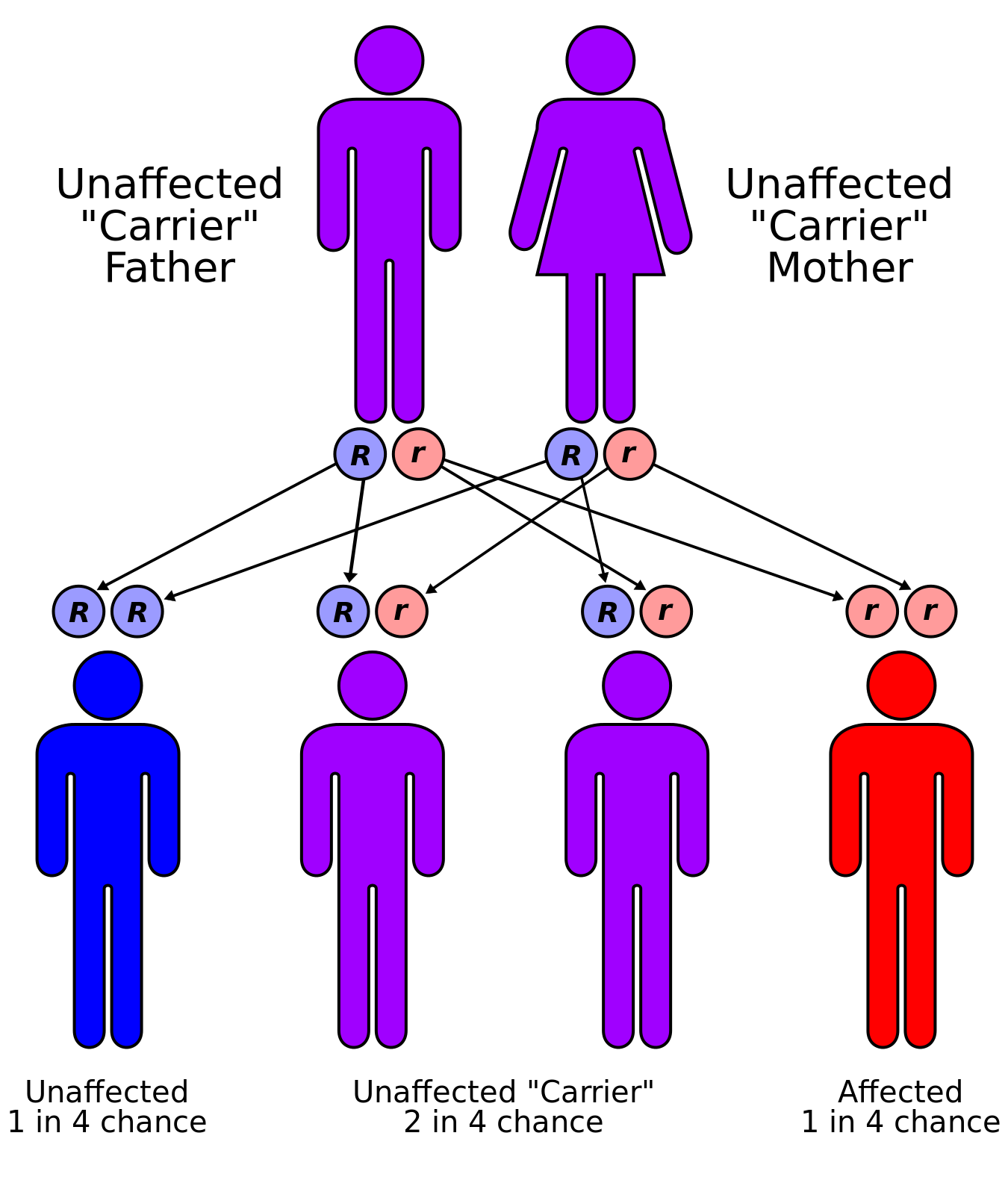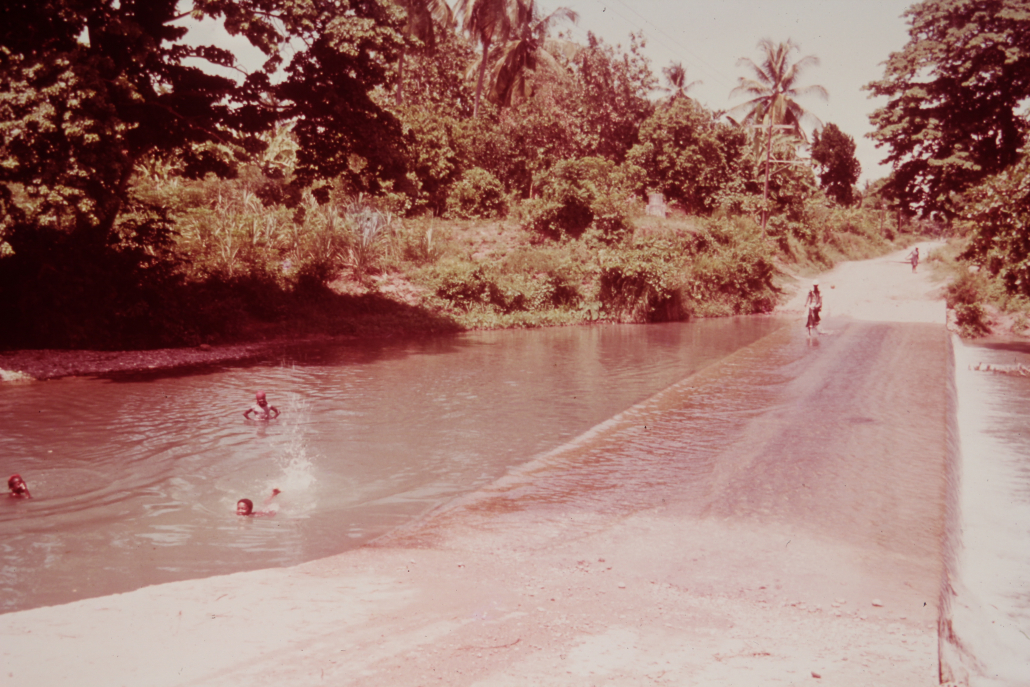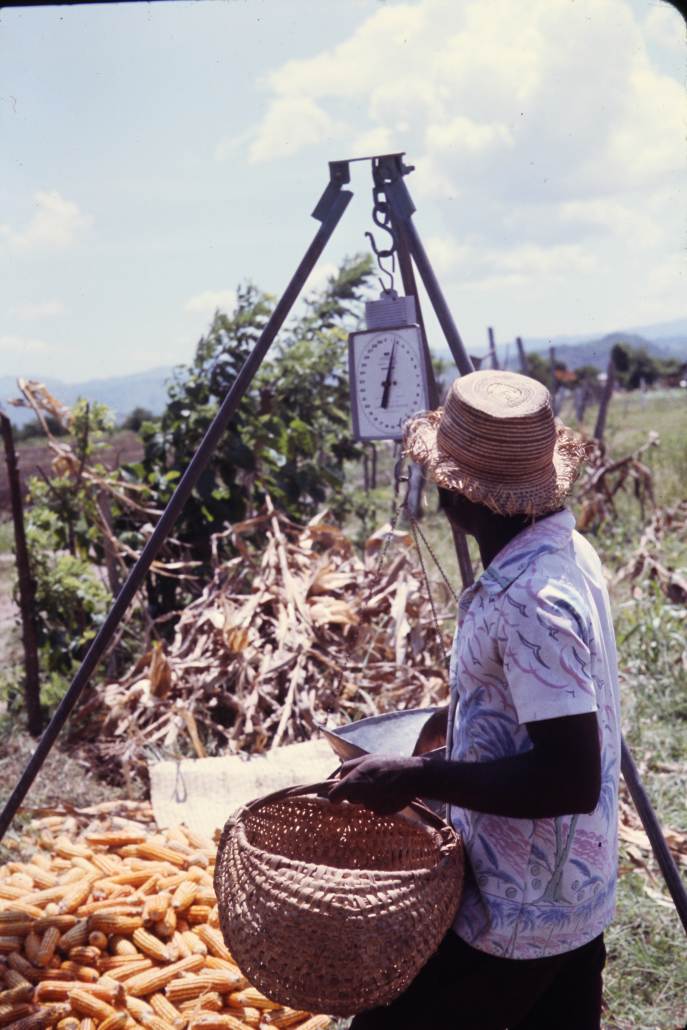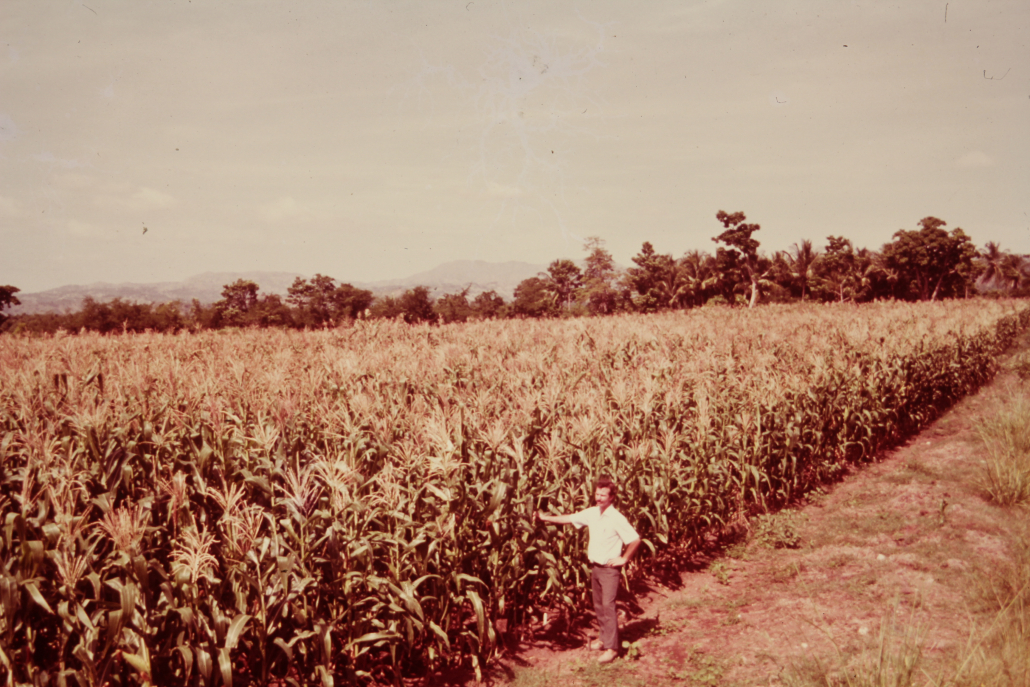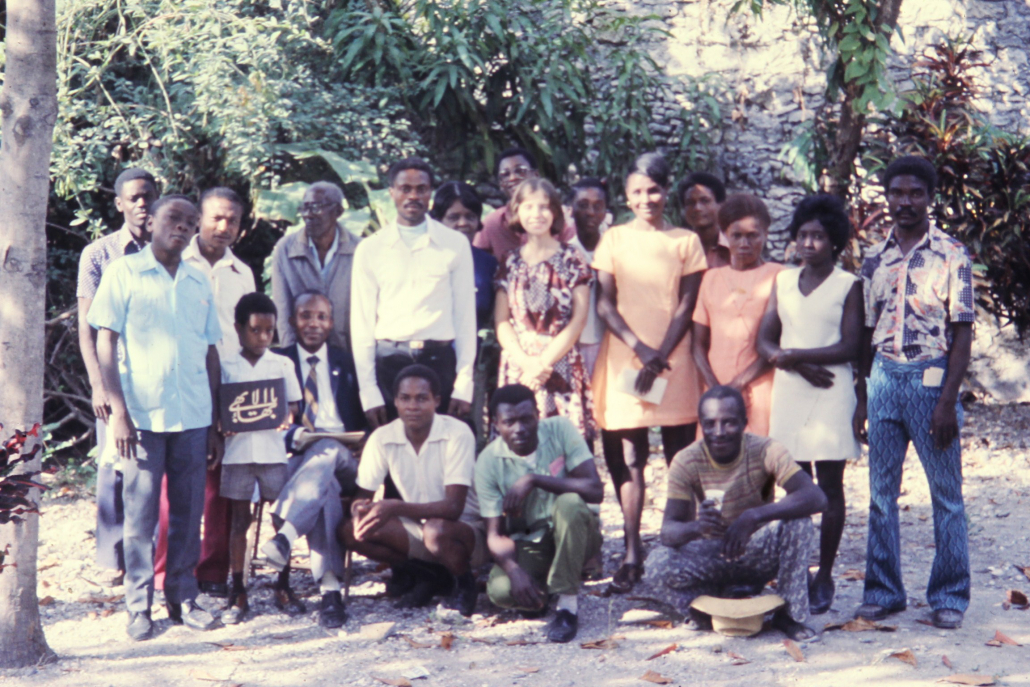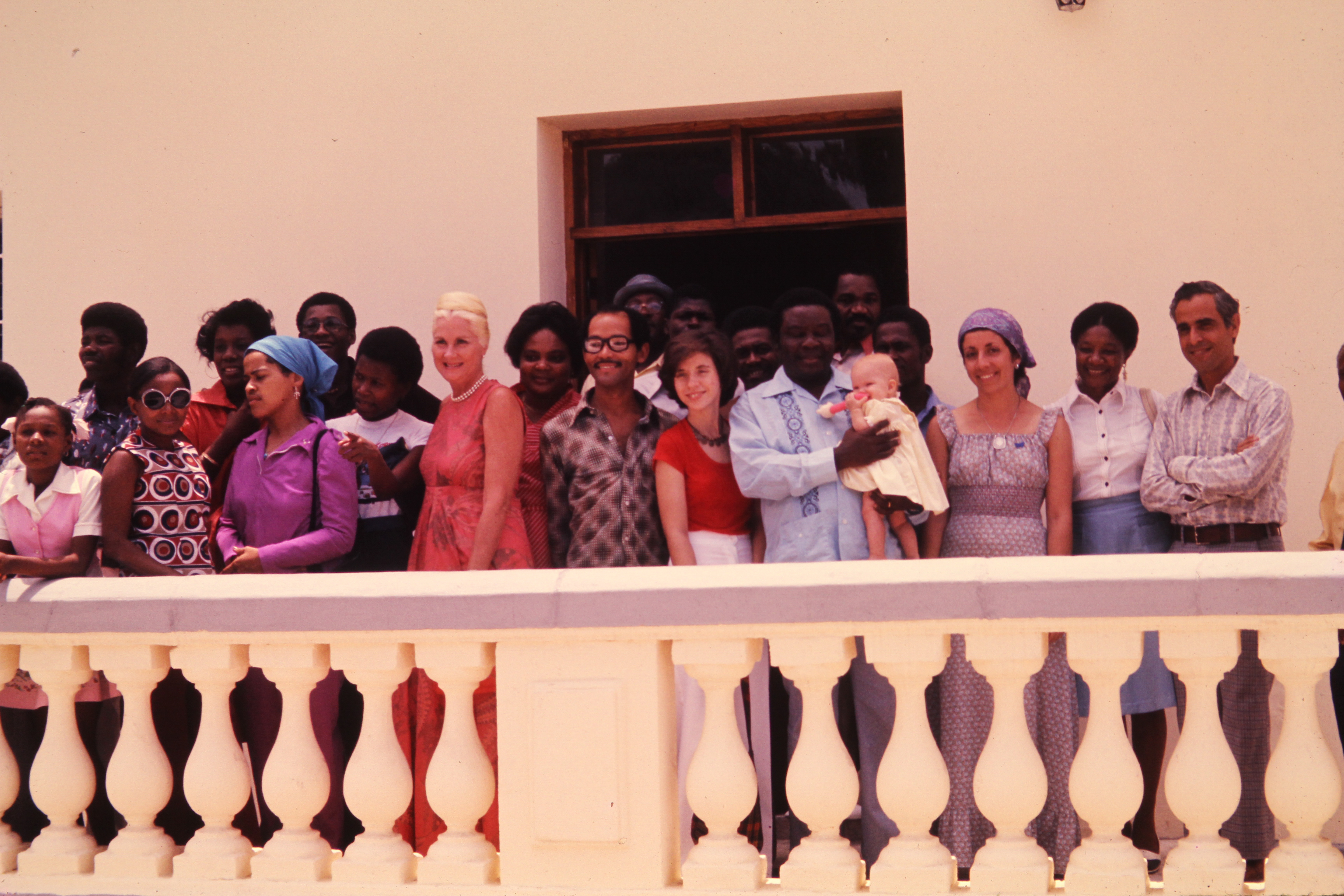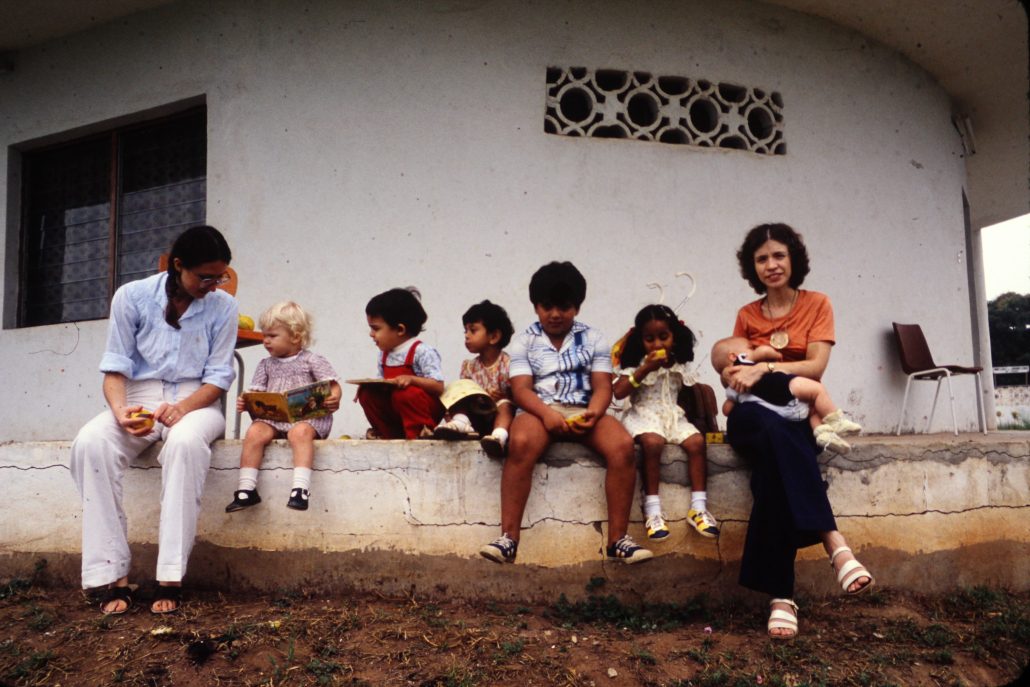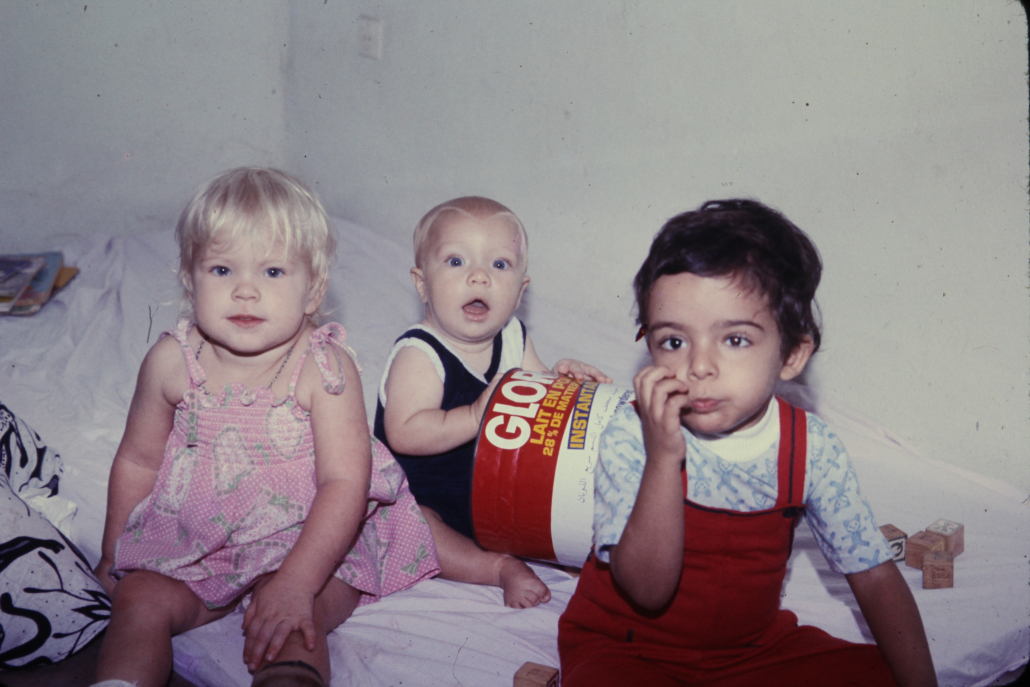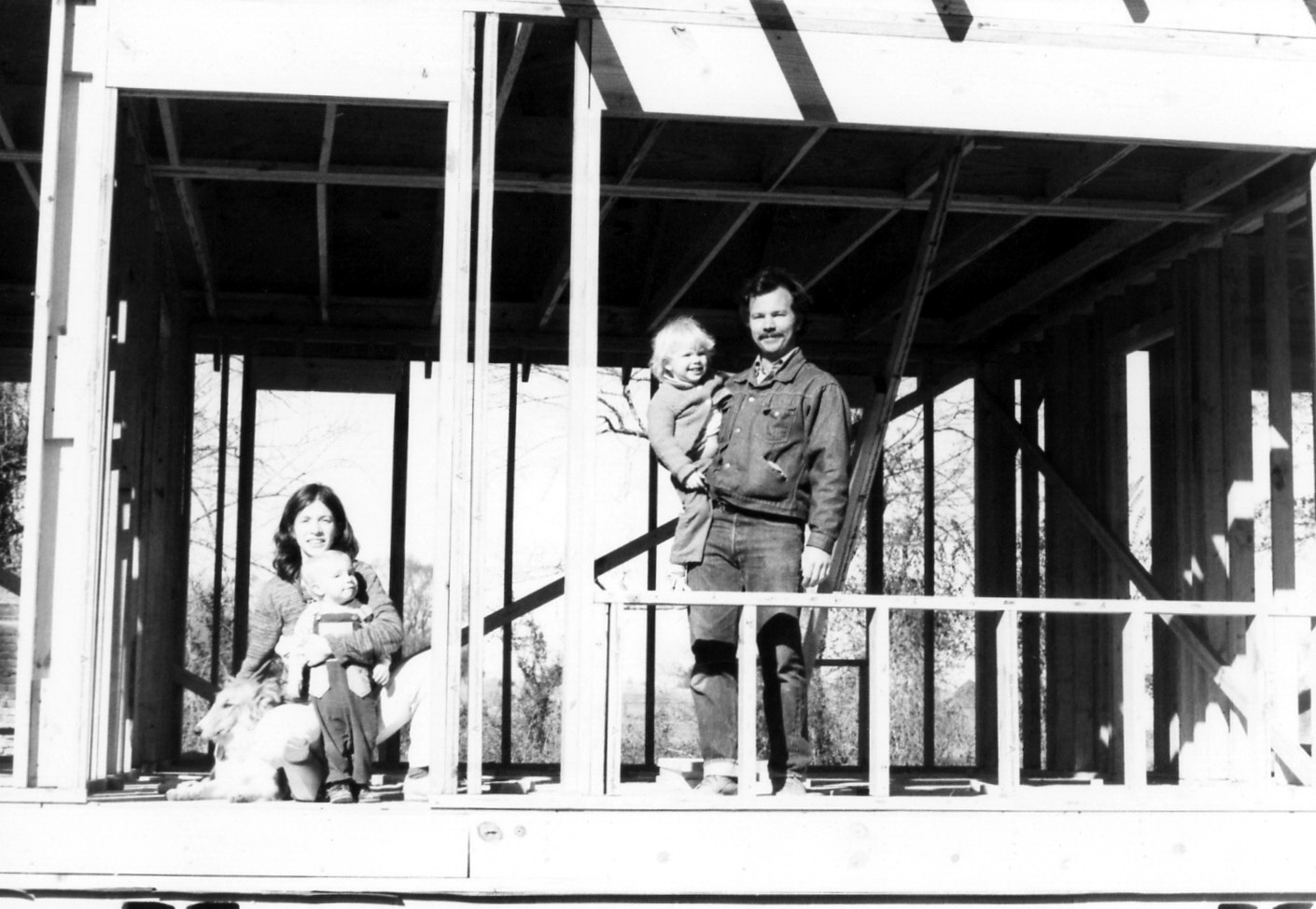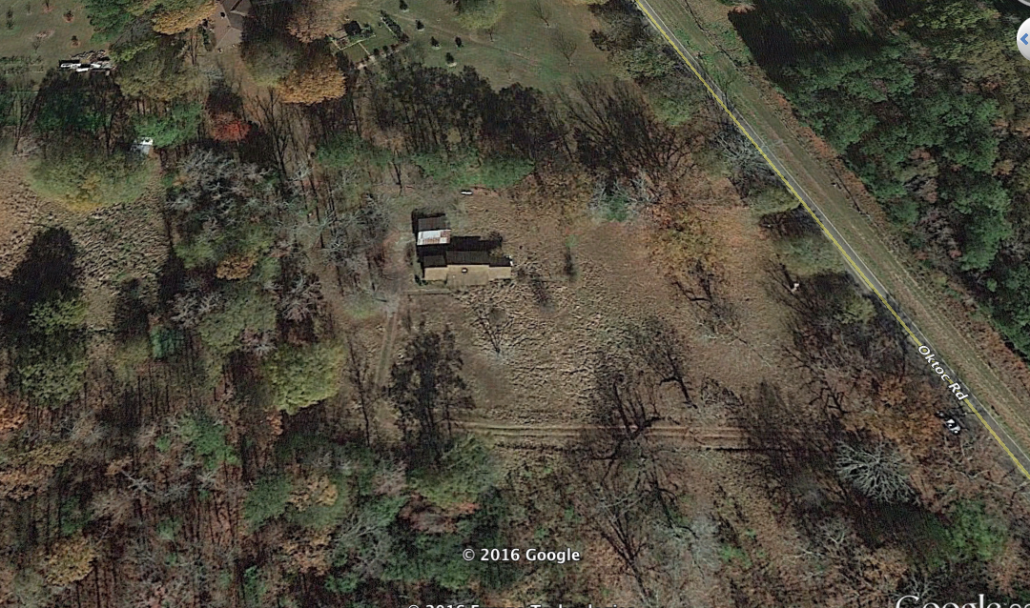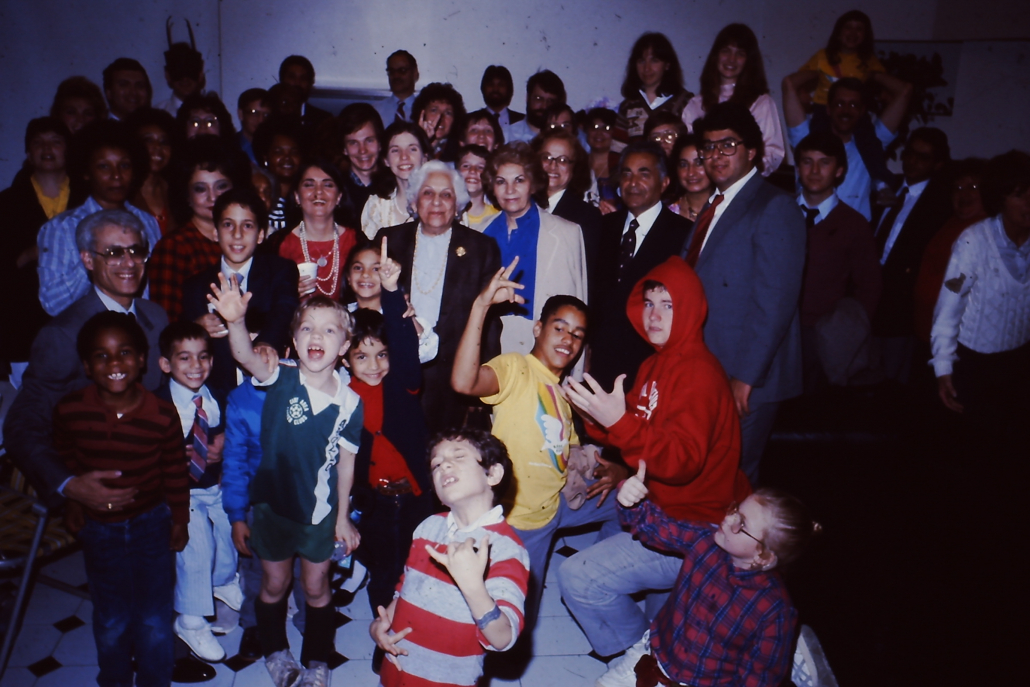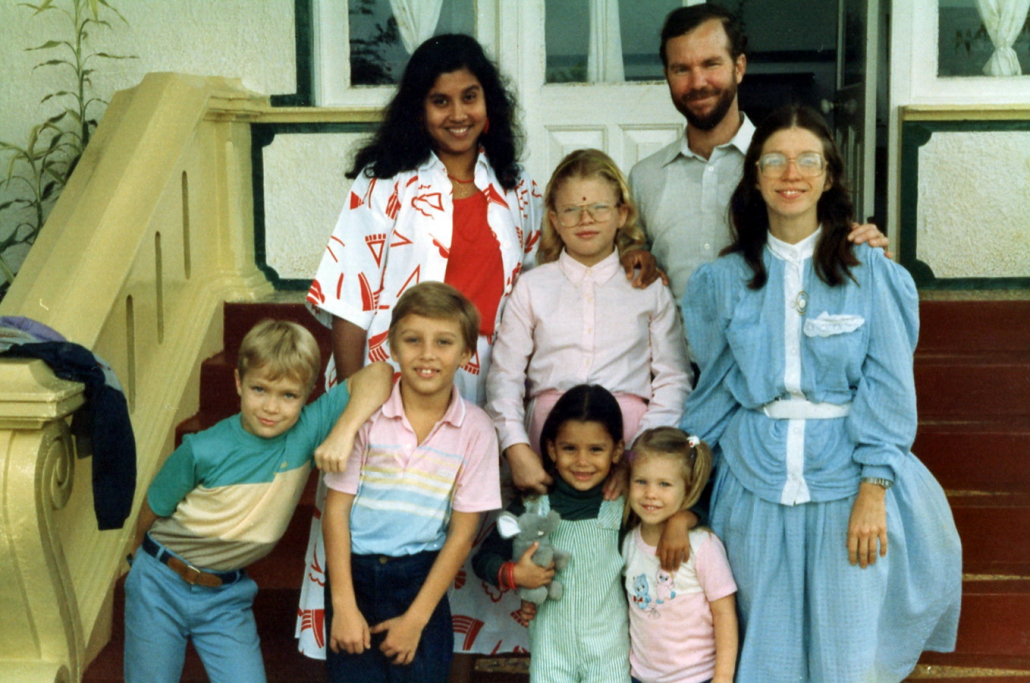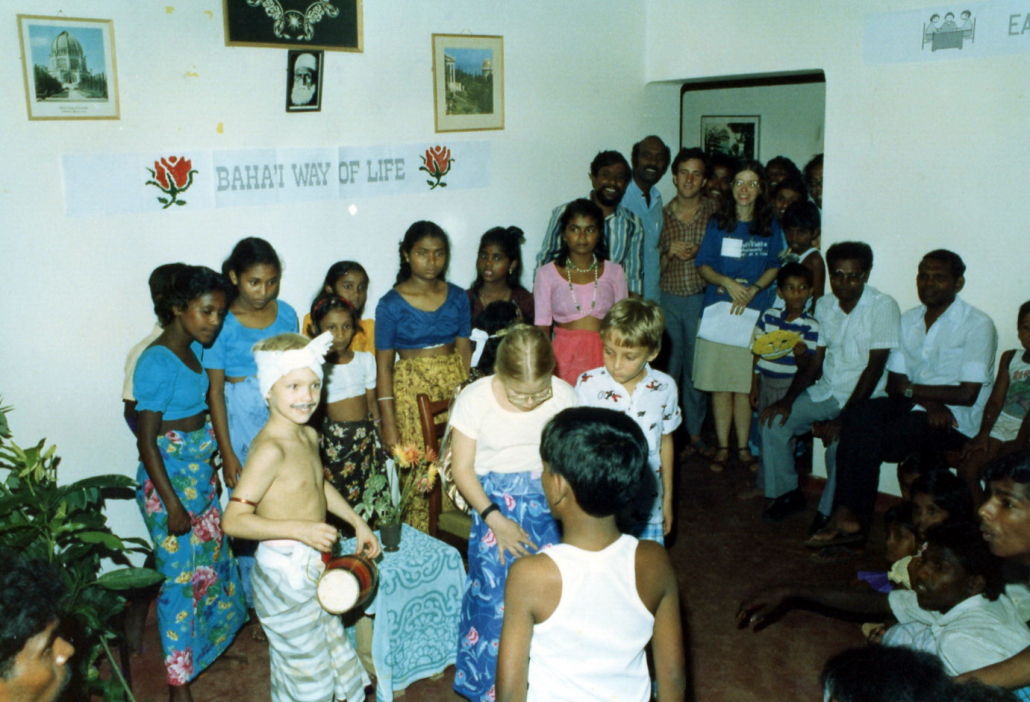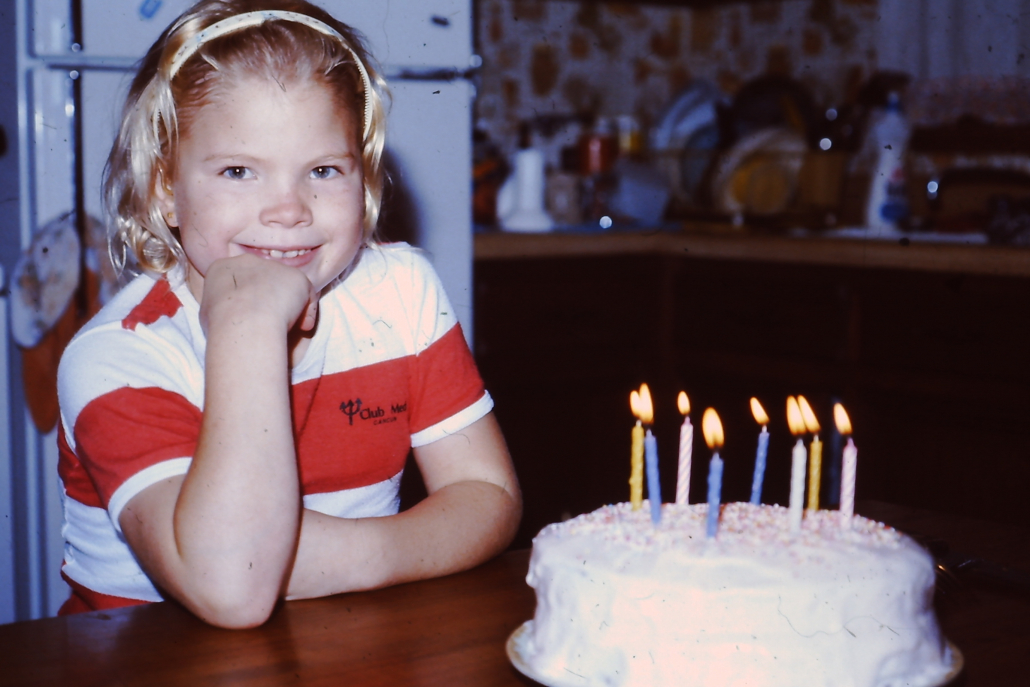Cool Timeline
Aileen was born July 30, 1976. If we step back 9 months, she was conceived in the fall of 1975, soon after Carolyn and I arrived in Haiti. Haiti, extreme poverty, baby-doc Duvalier, no French (no Creole), no mobile phones, no videos– our new home.
Besides a couple of Catholic priests, there were no other foreigners living in Les Cayes in 1975. Papa Doc’s son, Baby Doc, was president and stories of the atrocities of Papa Doc were still fresh in the mind of Hatians.
How did I react upon arriving in Haiti? I adapted. I reached out and worked with my professional peers and the Baha’i community to meet all expectations, objectives, and hopes. In many ways, I found happiness and fulfillment and objectified the saying that, when one works selflessly for others he or she reaps the benefits in growth and happiness. The key is selflessness, and except for a desire to serve and be effective in my service, I was not, and never became over the next 40 years, professionally ambitious. “We fulfil our highest purpose in a life of service, in which we offer our time, energy, knowledge, and financial resources.”
Upon arrival we started learning Haitian Creole. In about of year, we were fluent at a basic level, and could work and teach in Creole. By the end of our 2 year stay in Haiti, we had started learning French.
In Les Cayes (where we lived) there was only one small early 20th century telephone switchboard (using wires to make connections on the switchboard to re-route the calls to the required destinations). The land line between Les Cayes and Port-au-Prince often broke, meaning no connection outside of the city system (which only had a few phones, so not much use really). There was no real road between Les Cayes and Port-au-Prince (120 km). It took 10 hours and we sustained numerous bumps on our head (because the car often dropped into deep ruts and bounced out, and our heads knocked against the car roof). You had to gather your courage before taking this road. I eventually bought a dirt bike for the trip.
Starting in Haiti— springing forth from a spiritual birth a few years before, my personal deepening in the Faith, keenly observant of Baha’i examples of right living starting with ‘Abdu’l-Baha— I did my best to embody the words of Shoghi Effendi: “To be continually giving out for the good of our fellows undeterred by fear of poverty and reliant on the unfailing bounty of the Source of all wealth and all good–this is the secret of right living.” I was never wed to any job, or place. I gave up tenure track positions 2 times during my life (Mississippi State, NC State) and Dutch permanent employment at ARCADIS Euroconsult to pursue a life of service, never for the salary, never for personal glory. After receiving my offer of employment in Haiti, I contacted the Baha’i National Office in Wilmette and asked them if this fulfilled one of the international pioneering goals of the Faith. Only after that confirmation, I agreed to go.
Aileen’s pregnancy was easy. There were no ill signs and Carolyn was strong and positive. We consciously prayed for Aileen’s life and development, starting when she was still actively growing in the womb of her mother. Many foreign aid families were medically evacuated for deliveries, probably more a decision of their prejudices against local doctors and institutions rather than any medical necessity. Carolyn and I decided to use Port-au-Prince facilities and doctors, given the isolation of Les Cayes. She stayed in Les Cayes until the 9th month, and then local missionaries flew her to Port-au-Prince where she stayed at the home of the Hannas to await the big moment. I was ready at any time to jump on my motorcycle and race the 120 km to be present at the birth. Unfortunately, it was the only birth of my children where I was not present. Not because of the distance, but because of the rules of the hospitals in Port-au-Prince— Canope Vert, to be precise.
-
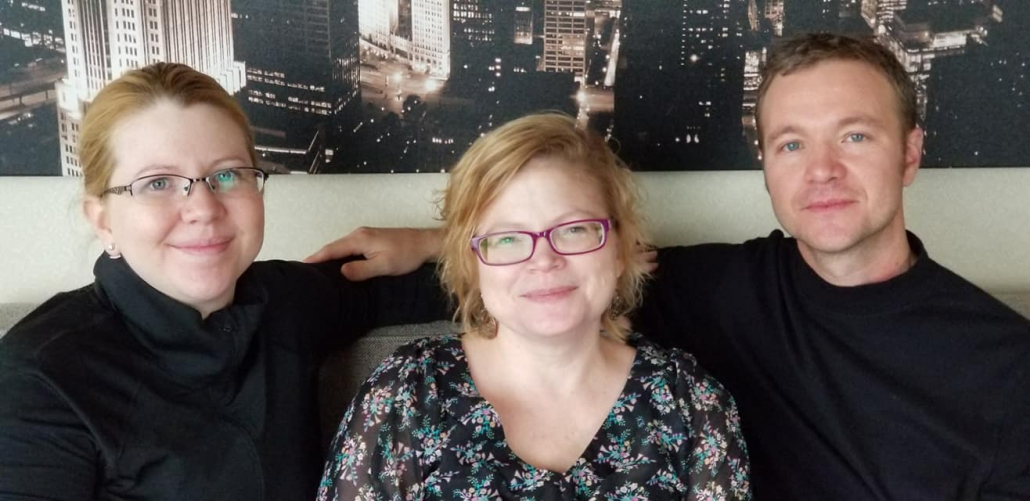
-

-

Hard work, over and over -
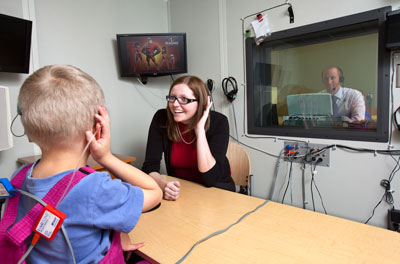
Learning phonemes -
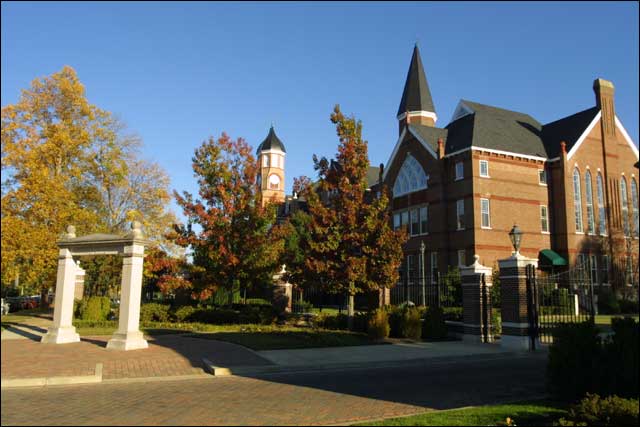
Mississippi University for Women -
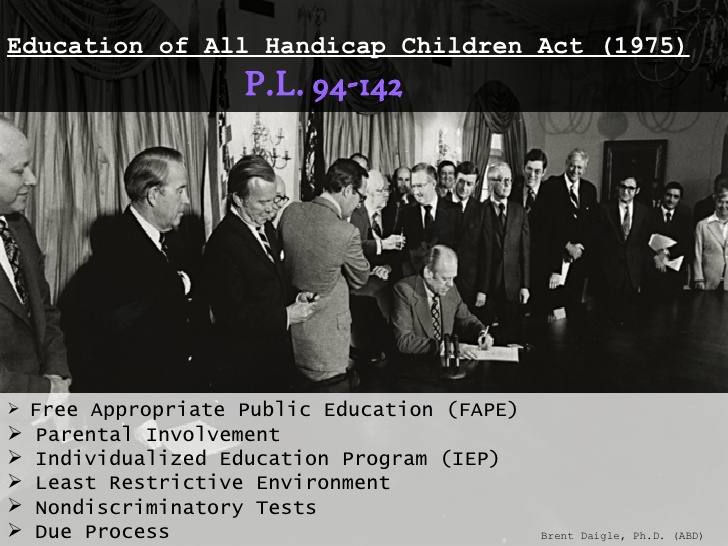
Hillary Clinton’s law helped Aileen in MS -
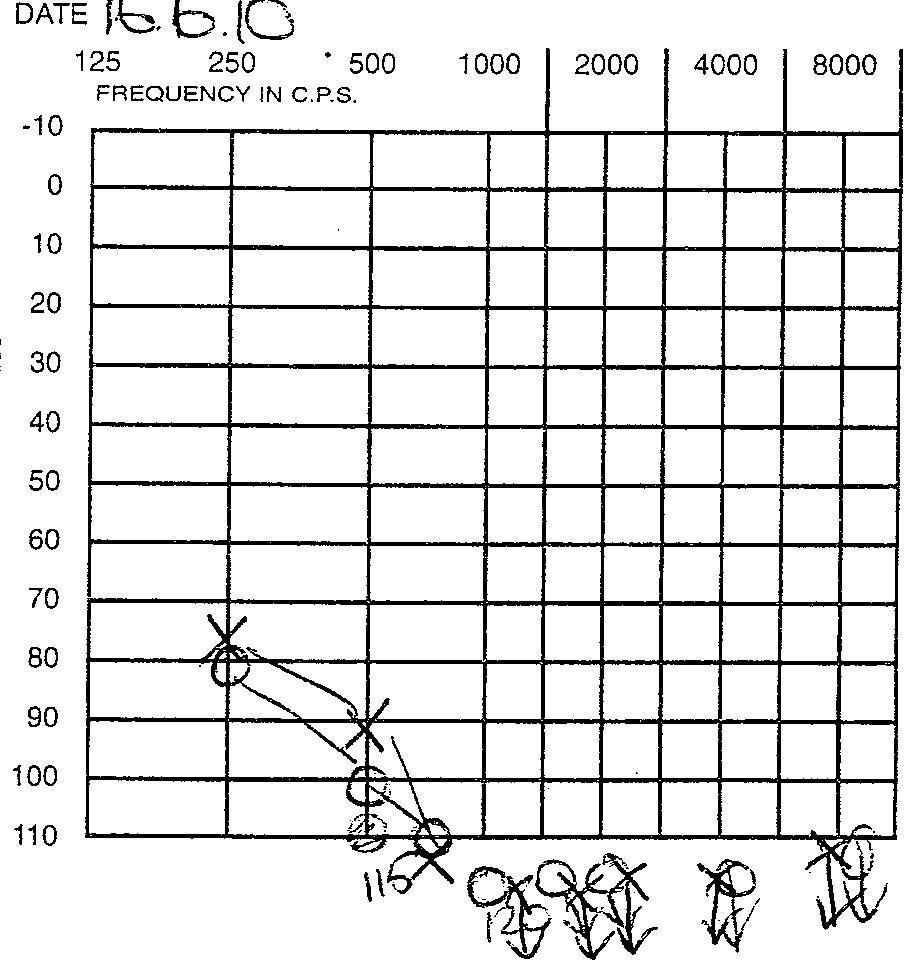
Aileen’s audiogram -

-
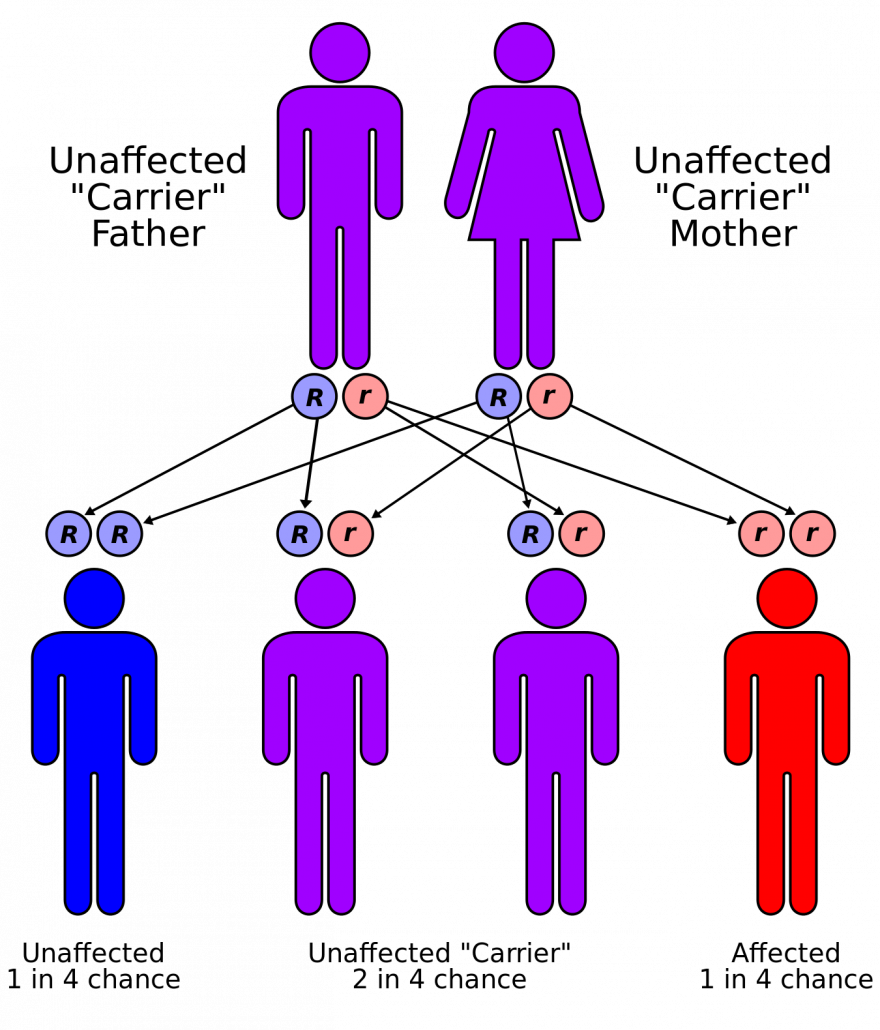
Without adequate metabolic treatment, Aileen could have died in infancy or childhood of overwhelming hypoglycemia and acidosis. Negative effects of inadequate treatment include stunted physical growth, delayed puberty– even mental retardation from recurrent, severe hypoglycemia. If not adequately treated serious hepatic complications including adenomas and even a small chance of later malignant transformation to hepatoma or hepatic carcinomas. Additional problems reported in adolescents and adults with gsd I have included hyperuricemic gout, pancreatitis, and chronic renal failure.
When Aileen was diagnosed, I researched this topic extensively. If under control before serious harm occurs, including prompt reversal of acidotic episodes, and appropriate long-term treatment, I understood that Aileen could be healthy. Her adult health and life span would also be good. Interestingly, if the literature is studied, there is a lack of effective treatment before the mid-1970s and thus limited long-term information about GSD. Aileen, in fact, as we shall see, participated in early research that greatly improved her life and the life of others. Is this all a coincidence?
Aileen’s care was a joint effort, provided by me and her mother. We agreed that I would work, giving Carolyn the time, opportunity and support during the day. Otherwise we shared her care. My background as a research scientist was applied to Aileen’s condition. In the attached graphs, it shows the dynamic of Aileen’s care. What the graphs shows is that over a few hours, the blood sugar drops and will, if not halted, result in a seizure.
So, after eating, there was only a few hours before a hypoglycemic convulsion could start. If a convulsion, a IV drip with a glucose solution needed to be started as fast as possible. Carolyn and I were trained to do this, and we practiced on each other. Of course, if we could get a medical professional, we took that route first. And convulsions did occur, irregularly but periodically. Perhaps every month, and even more often, an IV was needed, either because a convulsion was imminent, or already happening.
Here is where the reader needs to pause and reflect. For 10 years, that means all the time in Haiti, Africa, and Mississippi, Aileen’s GSD had to take the first priority— 24/7. Every night, an NG tube would be inserted. A microphone was wired to be near her face, so during the night we could monitor her breathing. We had to sleep lightly, aware of her breathing, ready if needed to respond to a medical emergency. Various pieces of medical equipment was needed… bought, operated, maintained. An IV set with glucose was always positioned nearby for quick access in an emergency. And…… as parents……. we knew what would happen if we couldn’t keep her condition under control.
How much stress did this cause for Carolyn and me? How much did it affect our marriage? Carolyn and I did many things right. We acted with regards to Aileen in perfect unity. I think the children, ironically Aileen, don’t realize how successfully we united for Aileen’s care (and later for the other 2 children). But it did affect our marriage. The requirements for her disease definitely impacted on Aileen’s life, including her relationship with me. Aileen sees me as inflexible with regards to her, and her mother as weak. Both of these characterizations are nonsense.
As soon as the full picture of GSD was understood, and we adapted to caring for a child with GSD, I started to notice that Aileen didn’t always react when spoken to. I talked with Carolyn about it. Aileen was between 12 and 18 months. This starts a whole new story about identifying that she is profoundly deaf, and to her parents once again responding to this. We left Africa because of Aileen. No other reason. We needed professional help, and Abidjan didn’t have it. So I took a job at Mississippi State.
When I finished my PhD at Mississippi State, and we had built our lovely rural home, I was offered a position of Associate Professor. But before the offer came, I was interviewed at NC State University in Raleigh. I really had no desire to move to Raleigh; I went because Mississippi State was taking too long to make up its mind about my future position. While in Raleigh, I checked with Duke University Hospital and the Wake County School System about possible services for Aileen.
Aileen was going to a special, federal program as Mississippi Woman’s College, for her pre-school education during our time in Mississippi. It was a good program but it was losing funding. Compared to Mississippi, Raleigh was heaven in terms of the services that could be offered to Aileen.
There was only one reason that we moved to Raleigh, and that was Aileen. Once again the family moved for Aileen. What was the result of the move, in terms of GSD? A minor miracle. She was accepted to get into a trial with a Chinese doctor investigating new ways to control GSD blood sugar. This resulted in research shown below that radically improved Aileen’s management. We had been informed that when she approached puberty we could expect a reduction in severity. But together with the corn starch, it reduced and gradually eliminated the frequency of her convulsions. I don’t think Aileen has any memory of these convulsions— that would be normal. Even though over time the convulsions diminished, one of her worse convulsion happened in Cary when she was 10 y.o. and we gave her emergency treatment on the lawn in front of our house. A nightmare memory. Maybe I’ll write about it.
In terms of her deafness, she was mainstreamed in the NC public school system, and later in the NC University system, which resulted in her being in the top perhaps 1% of the profoundly deaf in terms of her ability. Unlike most profoundly deaf, she is effective in both the hearing and deaf worlds. The extent of this accomplishment cannot be overestimated. It results from Aileen’s strength of character, and the unity of her parents and their ability to give her everything she needed. That is, until the divorce, which, not coincidentally, happened when she was becoming more independent and able to live a normal life without full time support. As long as Aileen was the priority, the marriage stayed together. But we did neglect the marriage, and the stress impacted us. How could it be otherwise?
Aileen was diagnosed with glycogen storage disease, type 2, in Washington DC. Actually prior to that doctors in Haiti had already suggested this possibility, specifically the French doctor across the street in Cayes and a second doctor in Port-au-Prince. We continued to see periodically the hypoglycemic seizures of Aileen, responding always by feeding her, not really knowing the reason but recognizing the link between eating and the seizure. And, of course, we needed more information and so Carolyn and Aileen traveled to Northern Virginia where our parents still lived for tests. When the results were conveyed to me in Les Cayes, the French doctor’s preliminary diagnosis was confirmed. I met often with him to discuss the condition and what he knew about it.
The treatment of the disease was rather straight forward. Frequent feeding; approximately every 3 hours. Because of the lack of an enzyme involved in the metabolism of glycogen (a complex sugar), Aileen’s blood sugar level was directly linked to eating and digestion. Ingested food process produces blood sugar directly for a few hours, and then the body breaks down glycogen reserves to maintain blood sugar after this initial period. So what to do during the night, when she wasn’t eating? She needed liquid food dripped during the night into her stomach via a NG (nasal-gastric) tube. The tube is inserted in the nose and goes down the back of her throat to her stomach.
If we kept to a this schedule, then Aileen was seizure free. But what happens when something happens during the night, and the drip stops? Or when Aileen gets a virus, and doesn’t digest her food. Or, when Aileen doesn’t want to eat after 3 hours because she isn’t hungry?
Most of the rest of my stories concerning Aileen’s early life I will scatter around the stories of Haiti, Ivory Coast, Mississippi, North Carolina and Sri Lanka. But there is one more important fact that seems to fit in here.
Aileen’s genetic disorder was passed to her by me, and her mother. As can be seen in the diagram, there is a 1 in 4 chance of our children to have GSD. Aileen tested Carolyn and me to our limit. Baha’is believe that God does not test beyond the capacity of his creatures, but indeed this was a hard time for us. Baha’is also don’t generally practice sterilization, vasectomies, tubal ligation and the like. On the other hand, we were advised to think carefully about having another child with GSD. One child with GSD was a lot. Two…… maybe overwhelming. Then….. amazingly, Lua was conceived and diagnosed as having GSD. Overwhelming news. I could see the next 10 years with Lua, all the stuggles and difficulities. That was enough. So, when the coin was tossed, it was me chosen for the procedure. This would have implications after the divorce, because vasectomies are typically thought to be non-reversible. Or, perhaps better said, the odds of being successfully reversed are very low. That’s a story for my life in the Netherlands.
Two interesting facts about this decision. One is that Marta was born; and second is that Lua was diagnosed with GSD, like Aileen, at birth. Both of these facts will be turned into interesting stories, sooner or later.
The issue of Aileen during the lead up to the divorce, and after the divorce, will be difficult to write about. Why? Because I know Aileen will be angry about anything that I write.
Well, I’ve never been stopped by someone who didn’t like my ideas or initiative. For 45 years I’ve been a consultant. By definition, there are many people who don’t like consultants. Why? Consultants are bought in to solve problems that the local staff either do not have the skills and training to resolve, or for some reason they lack some capacity to solve the problem. That doesn’t make us very popular. There are usually some who really appreciate the services of a competent consultant, and there are others who dislike the way we look, talk, and act.
I suppose that I have to say, that in my relationship with my children, all of them, I believe we are bound by certain rules, and laws— laws that both in the physical sense, and laws that operate in a parallel spiritual realm. Baha’is teach that “”the material and spiritual worlds are closely interlinked,”and “All things are interconnected and flourish according to the law of reciprocity.”
“…..cooperation, mutual aid, and reciprocity are essential characteristics in the unified body of the world of being, inasmuch as all created things are closely related together and each is influenced by the other or deriveth benefit there from, either directly or indirectly.”
In the case of fatherhood, in the physical realm I supplied genetics, training, love, and resources. From the point of view of contemporary American culture, genetics is discounted, training becomes the sole domain of the mother, love becomes abstract, and resources are given until the child reaches maturity. From the point of view of the spiritual realm, the eternal reality, genetics generate a new soul, a spiritual entity. This happens at conception. That soul is connected to the genetic father and mother forever. Thus, genetics is very important (because of the creation of the soul), training by both parents is mandatory (you don’t get out of this role if there is a divorce), love is not bound by time or space, and the use of resources a matter for family consultation and unity.
One cannot ignore the interconnectedness of the spiritual and the physical, and say: “Well, I’m going to decide to be on the side of my mother” and discount the fact that the relationship between the parents is not part of the terms of reference for pre-teens. Such behavior is not resonant with the energies in our lives, and will cause a person to “swim upstream” on issues. This is Aileen’s river, and also her siblings.
OK, I know my spiritual responsibility. But does Aileen, or my children in general, know that this is a two way street? Children grow up, there is no eternal parenthood. The relationship changes from parent-child to parent-adult. The child becomes an adult. More than any of my children, Aileen stayed in the child position, until perhaps she was 40 years old, and she revelled in showing disrespect for her father.
Although I am talking about Aileen, the context of the spiritual connection between parents and children, is for all my children. In another section I write about Tanya Reusche, my third wife. I had to divorce her because she essentially demanded that I forget Marta. All our fights were about Marta (and Marta’s mother). I told Tanya, repeatedly, it is impossible for me to abandon this principle, this responsibility. They are my children, in this world, and forever.
So how did all this disfunctional situation with Aileen start? In my opinion, it started with keeping her alive and healthy in the bad years of GSD, and when had to undertake extensive and tiring auditory training. My position was mathematical. It was not a decision at all— simply there were things that had to be done. And, when Aileen rebelled against this hard position, she began to turn against me. I believe this with all my heart.
In the lead up to the divorce, which by the way, was not a foregone conclusion, Aileen immediately jumped on the side of her mother. Her poor mother, incapable of standing up to the mean father in the eyes of a pre-teen, needed her help. The mean father was categorical, dictatorial, and uncompromising. In fact, she says, he’s just like his mother. This statement always amused me. (Does anybody really think that my father, a career military officer, was not a commanding officer? Nonsense. I was heavily influenced in my early life by my father’s manner– the manner of a senior officer in the Air Force.).
I have made the point elsewhere that Aileen did not have all the facts to judge, but that didn’t stop Aileen in Sri Lanka, and didn’t stop her from continuing to judge me in Garner and Indianapolis. Even more, not only did she advocate her position with her mother, but she also made sure her brother and sister were equally “well informed.”
From the early 90s, until the present (Aileen’s 40th birthday), twenty years give or take, Aileen has been aggressive and unpleasant to me, her father. For what reason? Did I ever do anything bad to her? My answer is unequivocally, “no.”
Aileen has carefully hidden from me most of her life over the past 20 years. She reveals tidbits to me from time to time. I’m pretty sure the same holds true with Lua and Nabil, but to a lesser extent. But she continues to seek the support of her mother, and for this, Carolyn has been wonderful and provided selfless support to Aileen and Analissa. However, not the kind of support that I would have given. There is a reason why children have both a father and a mother.
If Carolyn and I were together, and we consulted about Aileen’s problems, they would have been handled differently. Carolyn is too nice, and Gary #2 doesn’t seem to play a balancing role. I’m nice too, but a different kind of nice. My nice is: “I’m not going to compromise on principle.” Aileen will love that. Proof that her father is the dictator. However, what principles? Of course, in case of her health, the best doctors and what they advise. Or, moral principles taught by all the world’s religions, and very elegantly enunciated by Bahá’u’lláh and the central figures of the Baha’i Faith. Are these my principles? Am I wrong to put them first? Let the reader judge. I’m not afraid of God’s judgment on this matter.
Since the early 1990s, I have not been allowed to play any kind of role in Aileen’s life. I never had enough information to participate in consultation, and I was never invited. The door was never open. Standing behind it was a daughter that didn’t want to hear anything that her father said.
Somewhere in the depths of her soul, Aileen knows that many of the choices she has made in her adult life were not very good. She made these choices with open eyes, knowing that some of them were against her upbringing. She knew that her father and mother would not be happy with some of her decisions, but she also knew that her mother would support her no matter what and that her father would insist on principles. So, afraid of being judged, she hid from me and others the details of her life.
She still has time to achieve her potential. She has a good heart and a lot of potential. But, at 40, she is running out of time. I wish we could have talked over the years– debated, disagreed. Been close like father and daughter. Since the divorce the internet has made it possible to be in touch 24/7. Not ideal, but so much better than nothing. Perhaps if we were closer, our discussions could have been helpful. Then I would have been her father and maybe I could have added something positive to her life, and she could have contributed to mine. Isn’t that how it should work? What else would I want?
“Holding on to anger is like grasping a hot coal with the intent of throwing it at someone else; you are the one who gets burned.”
― Gautama Buddha
“You will not be punished for your anger; you will be punished by your anger.”
― Gautama Buddha
In one picture, below, Aileen was 40 years old, with her daughter Analissa (Sept 2016). There is a picture from Nov 2017 with Jimjim Britt. Everything I know about him is good. God willing he will find happiness with Aileen, and they will live together unified and supportive. There are rumours about their marriage, but also difficulties that need to be solved first, concerning his ex-wife.
Since she fell in love Jim, Aileen has begun a new life. At least, that is what I see from afar. I am optimistic that the change is permanent. She has much capacity, she is an activist fighting for the rights of her clients, and she is a strong believer in God and the moral reality of life. God willing, she will now really bloom. It would be nice if I could see this, but, alas, too far away and the world is falling apart (I’m writing in 2020, and the scientists give us 11 years to change. So far, the world is just accelerating its destruction, with no sign of changing). So, I’ll wait for a meeting in another world, and we’ll compare notes.
This picture (2017, family reunion in Chicago) is interesting. First there is Aileen. She is smiling— sort of. This smile is implies something else, probably some sharing of stories between the siblings. Lua is showing patience and tolerance– sort of. Actually, she appears to be “holding something in” and waiting for the picture to be taken so that she can leave. Nabil, aloof and trying (unsuccessfully?) to find a middle ground.

